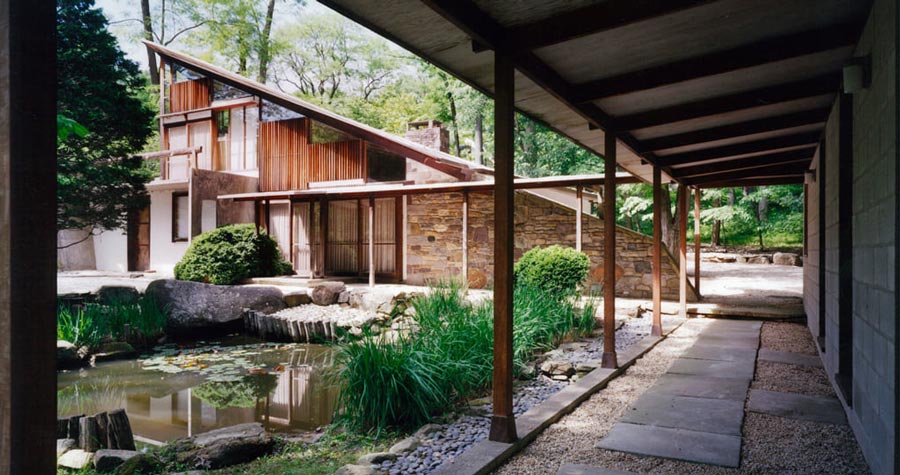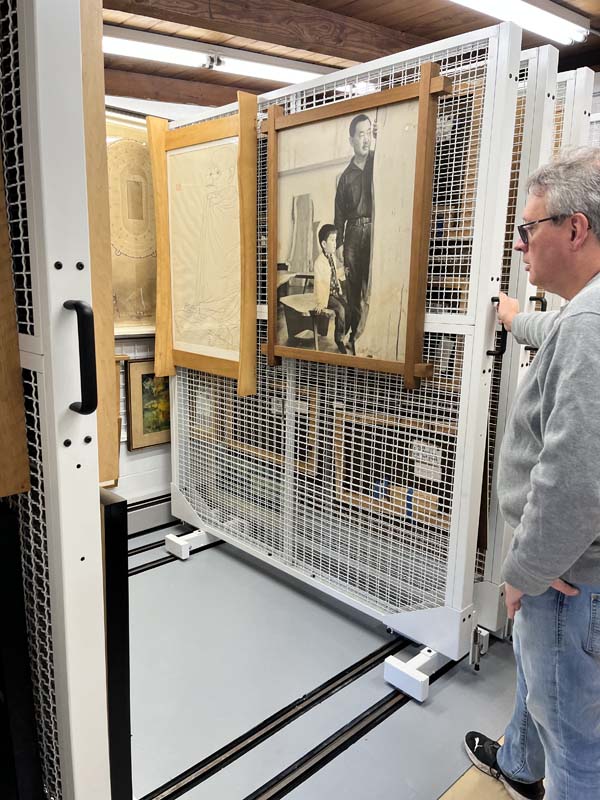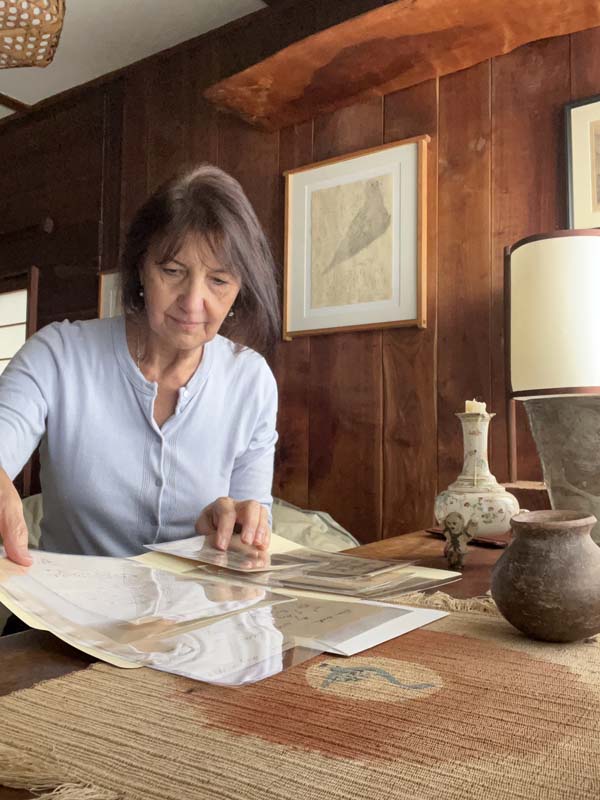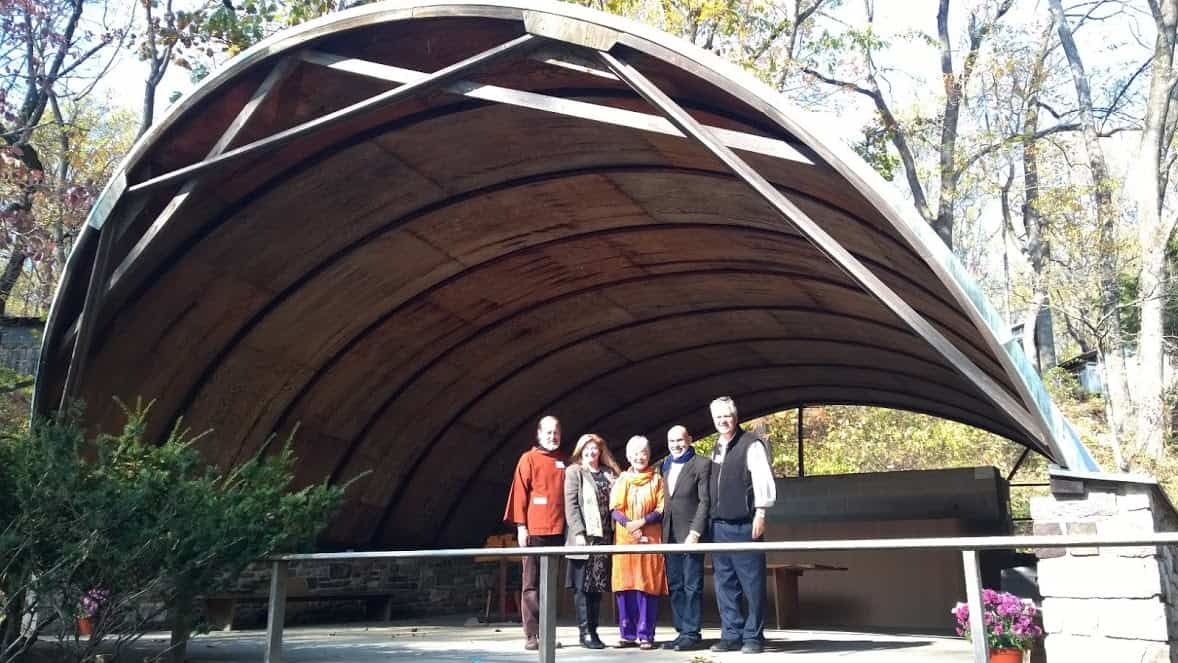Historic Preservation: National Historic Landmark

We are truly honored that the Nakashima complex is designated a National Historic Landmark and listed on the World Monument Fund watch list. The Nakashima Foundation for Peace is entrusted with the care of the collection of furniture, as well as the 15 modernist structures that George Nakashima built on the property. These beautiful buildings combine International style and Modernist influences with Japanese carpentry traditions. They feature innovative structural elements, like thin shell conoidal and hyperbolic paraboloid roofs, and materials including wood, reinforced concrete, plywood, and stone. They are historically important and require specialized maintenance and preservation attention.
Our recent preservation work includes implementing recommendations of a concrete assessment of the Pool and Pool House, installing art storage racks for framed drawings and artwork in the Cloisters Building, and outfitting an Archives Room for climate-controlled storage of archival material.
ARCHIVES PRESERVATION
We are actively working to stabilize and preserve the Nakashima archives collection. In 2020, we received a Preservation Needs Assessment Report conducted by the Conservation Center for Art & Historic Artifacts and are implementing its recommendations. In 2022, we received funding from the National Endowment for the Humanities Preservation Assistance Grants for Smaller Institutions to purchase archival supplies and environmental monitoring equipment for spaces where we use and store collections throughout the site. These include a polyester sealing machine to make custom-sized protective sleeves for documents and prints, and data loggers to measure temperature and humidity. Archivist Dave Long and Grants Manager/Administrator Zoriana Siokalo organized and rehoused archival material and planned for this continuing work in the Family House.
The Nakashima archives preservation project has been made possible by a major grant from the National Endowment for the Humanities: Democracy Demands Wisdom.
In 2023, we were awarded a Historical & Archival Records Care (HARC) grant from the Pennsylvania Historical and Museum Commission to tend to the archives specifically in the Nakashima Family House. Collections include the largely untouched archives related to the family’s history and legacy, such as letters and photo albums, correspondence with artists and friends Ben and Bernarda Shahn, Harry Bertoia, and Morris Graves, and documents related to the incarceration of the Nakashima family at Minidoka War Relocation Center in Idaho during WWII and its impact on the career and life of George Nakashima.
The Nakashima archives preservation project is supported by a grant from the Pennsylvania Historical and Museum Commission’s Historical Archives and Records Care Grant, a program funded by the Commonwealth of Pennsylvania.
PRESERVATION OF THE NAKASHIMA FAMILY HOUSE
The Nakashima Family House was continuously occupied from 1946 when George built the house until the 2020 passing of his son Kevin, the last Family House resident, and the “curator” of family history and lore. Not only is the House an enduring testament to Nakashima’s midcentury Japanese folk craft, it is filled with handcrafted furniture and built-in cabinetry, books, art work, letters and memoirs, and artifacts related to the family’s life and travel.
We launched the work on the Family House in 2022 with the NEH and HARC archives preservation grants and a Collections Assessment for Preservation (CAP) grant site visit in October 2023. Conservator Wendy Jessup and environmental engineer Michael Henry completed an assessment of the House and a report to help us preserve and care for the building and collections inside the historic building.
Recently awarded grants (2023-2024) from the National Trust for Historic Preservation Favrot Fund and the Keystone Historic Preservation Planning program will allow us to plan for the preservation and interpretation of the Family House. Working with colleagues from the University of Pennsylvania, we will produce preservation documents such as a historic structures report, architectural drawings, and other planning documents that will help guide us in implementing the preservation of the House.
RESTORATION OF POOL AND POOL HOUSE
In 2020, the Foundation received a $5,000 grant from the National Trust for Historic Preservation through the National Trust Preservation Fund. This funding has allowed us to engage David Biggs, Biggs Consulting Engineers in fall 2020, to complete a concrete assessment of two historic properties on our complex, the Pool House and Pool, and make recommendations for their preservation.
Over the summer and fall, we worked on the restoration of the roof and interior structural supports of the Pool House. This large structure, measuring 33’ x 30’ and open at both ends, was built in 1960 with a distinctively canted barrel-vault roof design. The roof is constructed of plywood covered with a thin layer of asphalt and edged with copper, the base constructed of stone and concrete block. The Pool House is one of the earliest examples of a building whose water is heated with a passive solar system. The adjacent Pool, built about the same time as the Pool House, received a design award in 1960 for the innovative form and use of the cantilever principle of the concrete deck, a design element mirrored in the Pool House itself.
Making a contribution to the Nakashima Foundation for Peace carries out the gift of serenity for generations to come. On visiting our grounds, many are overcome by a sense of peaceful beauty generated not just by the atmosphere created by the buildings and landscape themselves, but by the harmony of the furniture within them. Your support makes the many necessary restoration and preservation projects on our complex possible, allowing us to train a new generation in the craft of architectural restoration. —Mira Nakashima


















